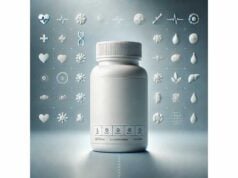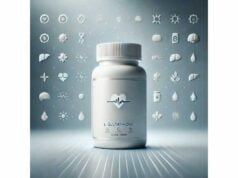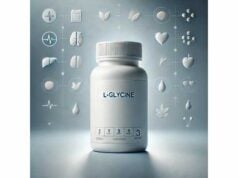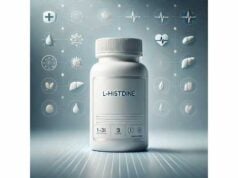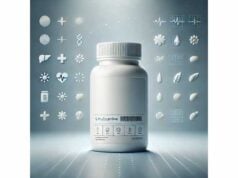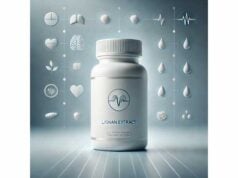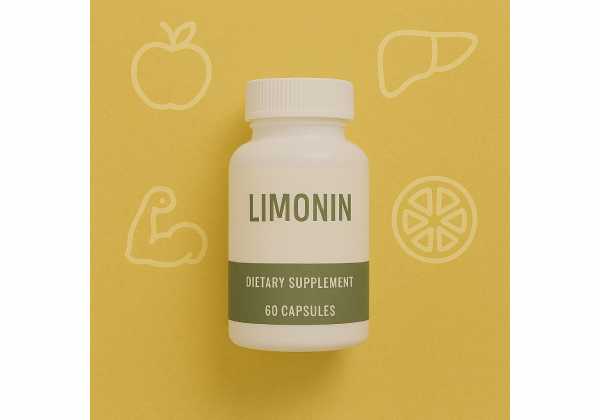
Limonin is a bioactive compound that gives some citrus fruits their characteristic bitterness. Belonging to a family of triterpenes called limonoids, it occurs naturally in oranges, grapefruits, lemons, limes, and their seeds and peels. In laboratory and animal studies, limonin shows antioxidant, anti-inflammatory, and cholesterol-modulating actions. Early human research has explored whether a standardized form—limonin glucoside—might influence markers linked to fatty liver, metabolic health, and immune function, though results so far are modest and mixed. As a supplement, limonin most often appears inside “citrus bioflavonoid” or “limonoid complex” formulas rather than as a single-ingredient capsule. For most people, regular citrus intake is the simplest way to obtain limonin as part of a broader matrix of phytochemicals. This guide explains what limonin is, how it appears to work, potential benefits and limitations, how to use it thoughtfully, what to know about dosage and timing, quality considerations, and the side effects and interactions to watch. You will also find a brief evidence snapshot and practical steps to decide whether limonin belongs in your routine.
Quick Overview
- May support antioxidant and anti-inflammatory defenses; human benefits appear modest.
- Potential aid for liver-related markers has not shown consistent improvement in trials.
- Typical supplemental limonoid blends provide ~100–500 mg total limonoids per day; no established clinical dose for isolated limonin.
- Avoid if pregnant, breastfeeding, or taking medications with grapefruit-type interactions unless cleared by a clinician.
Table of Contents
- What is limonin and how it works
- Evidence-backed benefits and limits
- How to use limonin in practice
- Dosage, timing, and stacking
- Side effects, interactions, and who should avoid
- Quality, sourcing, and label checks
What is limonin and how it works
Limonin at a glance. Limonin is a highly oxygenated triterpenoid found in citrus fruits, especially in seeds and peels, and it also forms in juice during storage as non-bitter precursors convert into the bitter aglycone. A related compound, limonin glucoside (LG), is a water-soluble derivative naturally present in juice and commonly used in research because it disperses well in beverages and supplements. In the body, glucosides are typically hydrolyzed to release the active aglycone that cells can use.
Where you encounter it. Beyond whole citrus, limonin occurs in standardized citrus extracts (often alongside hesperidin, naringin, eriocitrin, and other flavonoids). Food technologists also track it closely because limonin can increase juice bitterness over time. Although limonin is not the same compound as d-limonene, both originate from citrus; limonene is a volatile monoterpene (aroma of citrus peel), whereas limonin is a non-volatile limonoid that contributes taste and exhibits distinct biological actions.
Proposed mechanisms. Preclinical research suggests several complementary modes of action:
- Redox modulation. Limonin can up-regulate endogenous antioxidant systems (e.g., glutathione enzymes) and scavenge reactive species generated by metabolic or inflammatory stress.
- Inflammation signaling. It has been shown to influence NF-κB and NLRP3 inflammasome activity in cell and animal models, lowering pro-inflammatory cytokines and supporting resolution pathways.
- Lipid metabolism. Some studies report effects on hepatic lipid handling and cholesterol export, likely via transcription factors that regulate fatty acid oxidation and lipogenesis.
- Cell-protective effects. Limonin may enhance mitochondrial function and autophagy in stressed tissues in models, mechanisms relevant to metabolic and liver health.
Absorption and metabolism. Human pharmacokinetic work indicates that limonin and its glucoside are absorbed, metabolized (including phase II conjugation), and measurable in plasma and urine. Time to peak and overall exposure differ between the aglycone and glucoside forms, and bioavailability appears modest but biologically plausible. Food matrix, individual gut microbiota, and co-nutrients likely shape real-world absorption.
What it is not. Limonin is not a cure or a stand-alone treatment for metabolic or liver diseases. While the laboratory literature is encouraging, human trials are early and have produced small or null effects on key biomarkers when limonin glucoside is used alone.
Bottom line. Think of limonin as one useful piece of the citrus phytochemical mosaic—potentially helpful as part of a diet rich in whole fruits or as a component of a well-composed extract—rather than a single magic bullet.
Evidence-backed benefits and limits
Antioxidant and anti-inflammatory support (preclinical strength, emerging human relevance). In cells and animal models, limonin consistently demonstrates antioxidant and anti-inflammatory activity. These effects align with how citrus-rich diets are associated with better cardiometabolic profiles in population studies. In humans, however, isolated limonin or limonin glucoside has not yet delivered large, reproducible changes in standard clinical markers when tested alone. This discrepancy is common when moving from mechanistic models to nutrition trials that involve complex physiology, varied baseline diets, and short durations.
Liver and metabolic markers (mixed results). Investigators have explored limonin glucoside for non-alcoholic fatty liver disease (NAFLD)–related biomarkers in adults with excess weight. In a randomized, controlled setting, daily LG beverages over several weeks produced limited changes in liver enzymes, inflammatory markers, and lipids compared with placebo. These results suggest that limonin—at least at the tested dose and duration—may be insufficient by itself to shift clinical endpoints, even if it remains biologically active.
Lipid profile and cholesterol handling (preclinical promise). Animal studies and mechanistic work indicate limonoids can influence bile acid metabolism and hepatic lipid processing, which could, in theory, nudge cholesterol balance in a favorable direction. Human confirmation is still needed with well-powered trials, realistic dietary contexts, and standardized extracts.
Glycemic control and weight. The preclinical literature hints at improved insulin sensitivity and reduced hepatic fat accumulation under metabolic stress conditions. To date, robust human outcomes—such as changes in fasting glucose, HbA1c, or body weight—have not been consistently demonstrated with limonin alone. If present, effects are likely small and may depend on broader diet quality.
Immune modulation. Pilot work has examined immune readouts (e.g., cytokine profiles) following limonin glucoside intake. Findings in overweight adults were generally neutral, reinforcing the idea that limonin’s benefits may be incremental unless paired with comprehensive lifestyle changes or delivered as part of a synergistic citrus matrix.
Takeaway on benefits. Limonin is a credible supportive phytochemical with mechanistic backing, but current human trials do not justify strong disease claims. If you use limonin, do so to complement—not replace—evidence-based nutrition, movement, sleep, and medical care.
How to use limonin in practice
Start with food. The most dependable way to obtain limonin and related limonoids is to eat and drink citrus regularly:
- Choose whole fruits (oranges, grapefruit, pomelo, mandarins) several times per week.
- Include zest or peel infusions in cooking where appropriate.
- Rotate varieties; limonoid and flavonoid profiles differ across citrus types and seasons.
- Prefer minimally processed juice and consume soon after opening; storage increases bitterness for some varieties as non-bitter precursors convert to limonin, but overall phytochemical freshness declines with time.
When supplements make sense. Consider a standardized citrus extract if:
- You have low citrus intake or avoid juice due to sugars yet want concentrated phytochemicals.
- You’re assembling a broad-spectrum polyphenol stack and value limonoids alongside flavanones (hesperidin, naringin).
- You are under guidance from a clinician for targeted objectives (e.g., gentle support for liver health markers while working on diet and activity).
Forms you’ll see.
- Limonin glucoside beverages or capsules. Water-soluble and commonly researched; often blended with other citrus compounds.
- Citrus bioflavonoid complexes. Multi-compound extracts (standardized by total bioflavonoids) that may include limonoids at modest levels.
- Seed or peel extracts. These can vary widely; look for third-party testing and explicit standardization.
Realistic expectations. For healthy adults, the most likely near-term benefits are subtle: small improvements in subjective well-being, digestion comfort, or post-meal heaviness when used with an overall high-quality diet. Any measurable shifts in liver enzymes or lipids should be considered a bonus, not a guarantee.
Pair with foundational habits.
- Build meals around vegetables, legumes, whole grains, and lean proteins.
- Emphasize omega-3-rich foods and limit excess alcohol—both directly affect liver fat and inflammation.
- Aim for consistent physical activity; muscle contraction improves hepatic insulin sensitivity.
- Sleep 7–9 hours nightly; circadian regularity affects metabolic pathways that limonin may also touch.
Monitor and adjust. If you introduce a limonin-containing product, track simple markers you and your clinician agree on—energy, waist circumference, ALT/AST if indicated, fasting lipids—and reassess after 8–12 weeks.
Dosage, timing, and stacking
There is no universally established clinical dose for isolated limonin. Most commercially available products provide limonin as part of a limonoid or citrus bioflavonoid complex, with daily label recommendations commonly ranging from 100 to 500 mg of total limonoids. Research beverages using limonin glucoside have been administered daily for several weeks in adults, with overall neutral effects on primary clinical endpoints. Use these numbers as context, not as medical dosing instructions.
Practical starting point. If you decide to try a limonin-containing supplement:
- Begin at the low end of the product’s suggested range (often 100–200 mg total limonoids per day).
- Take with food to mirror how limonoids naturally occur and to support tolerability.
- Consider split dosing (morning and evening) for steady exposure if your product allows.
Timing. Because limonoids are food-derived and not stimulants, timing is flexible. Pair with the largest or most fat-containing meal of the day to potentially aid absorption of fat-soluble plant constituents.
Synergy ideas (diet-first).
- Vitamin C–rich foods (e.g., kiwi, bell peppers) naturally accompany citrus and support antioxidant networks.
- Polyphenol diversity. Combine citrus bioactives with berries (anthocyanins), green tea (catechins), or cocoa (flavanols) across the week for complementary actions.
- Fiber. Soluble and insoluble fibers (oats, legumes, chia) shape the gut environment that helps metabolize and activate plant compounds.
What not to stack without guidance.
- Medications with grapefruit-like interactions (certain statins, calcium-channel blockers, immunosuppressants). While limonin is not grapefruit juice, some citrus extracts can influence the same enzyme systems; use medical oversight.
- High-dose single-compound stacks targeting the same pathway (e.g., large doses of other NLRP3-modulating botanicals). Redundancy can raise risk without improving outcomes.
Trial duration. Give a thoughtful trial 8–12 weeks, then pause and reassess. If you don’t observe subjective or objective gains—and you already follow core lifestyle practices—continuing likely offers diminishing returns.
Side effects, interactions, and who should avoid
General tolerability. Limonin and limonin glucoside from foods are widely consumed and well tolerated. In human supplementation studies, adverse events are uncommon and typically mild (e.g., digestive upset, transient nausea, reflux, or a “bitter” aftertaste). People sensitive to citrus may experience mouth or stomach irritation.
Potential interactions.
- Drug metabolism. Some citrus constituents can interact with hepatic and intestinal enzymes and transporters. Although limonin itself is less studied than grapefruit furanocoumarins, exercise caution with drugs that carry grapefruit warnings (many statins, certain antiarrhythmics and calcium-channel blockers, select immunosuppressants, and some benzodiazepines).
- Anticoagulant/antiplatelet effects. Citrus polyphenols may influence platelet function in vitro. If you use blood thinners or have a bleeding disorder, consult your prescriber before adding concentrated citrus extracts.
- Allergy. Anyone with known citrus allergy should avoid limonin-containing extracts.
Special populations.
- Pregnancy and breastfeeding: safety data for concentrated limonin are insufficient. Avoid supplements unless your obstetric clinician explicitly approves a citrus extract product.
- Children and adolescents: prioritize whole foods; supplements lack pediatric safety research.
- Liver or kidney disease: discuss with your specialist; even “liver-support” supplements can be inappropriate without individualized guidance.
When to stop. Discontinue and seek medical advice if you notice persistent abdominal pain, dark urine, jaundice, unusual bruising or bleeding, or any new/worsening symptoms after starting a limonin-containing product.
Sensible expectations. Limonin is best thought of as a supportive food-derived compound, not a treatment. If you have diagnosed NAFLD, diabetes, dyslipidemia, or cardiovascular disease, follow your clinician’s plan; use citrus foods to enrich your diet and consider extracts only as an adjunct under guidance.
Quality, sourcing, and label checks
Standardization matters. Prefer products that state total limonoids or limonin/limonin glucoside content per serving. Vague “citrus complex” claims without numbers make it impossible to compare doses or align with research.
Identity and purity. Look for:
- Third-party testing seals (e.g., USP, NSF/Certified for Sport, Informed Choice).
- Certificate of analysis (COA) from an accredited lab showing identity, potency, and contaminant screens (heavy metals, pesticides, microbes).
- Country of origin and extraction method (water/ethanol extraction is typical; avoid products that cannot provide this information).
Formulation choices.
- Single-compound vs. multi-compound. Multi-compound citrus extracts may better mirror whole-food synergy. If you pursue an isolated limonin or limonin glucoside product, ensure clear standardization and conservative dosing.
- Capsules vs. beverages. Beverage formats may use limonin glucoside for solubility. Capsules often blend limonoids with flavanones; either can be appropriate if quality is verified.
Label red flags.
- Proprietary blends without per-compound amounts.
- Extravagant disease-treatment claims.
- “Mega-dose” marketing. With limonin, more is not proven to be better.
Storage and shelf life. Keep citrus extracts sealed, cool, and away from light and humidity. Note the “best by” date and discard if the product develops a harsh, rancid, or chemical smell.
Sustainability and ethics. Citrus limonoids can be efficiently sourced from juice-industry by-products (seeds, peels), an approach that reduces waste. Brands that disclose traceable sourcing and environmental practices earn extra points.
Personalization checklist. Before purchasing, ask:
- Does the product list standardized limonoid content?
- Is there an up-to-date COA matching the lot I’m buying?
- Does my medication list include any grapefruit-flagged drugs?
- Am I using this to complement—not replace—core lifestyle steps and medical care?
References
- Results from a randomized controlled trial indicate that limonin glucoside has limited effects on biomarkers of nonalcoholic fatty liver disease in overweight human subjects 2016 (RCT)
- Bioavailability of citrus limonoids in humans 2003
- Pharmacokinetics of Limonin and Its Glucoside in Rats and Human Based on a Validated UPLC–MS/MS Method 2022
- Limonin: A Review of Its Pharmacology, Toxicity, and Pharmacokinetics 2019 (Systematic Review)
- Bioactive Compounds of Citrus Fruits: A Review of Composition and Health Benefits of Carotenoids, Flavonoids, Limonoids, and Terpenes 2023 (Review)
Medical Disclaimer and Sharing
This content is for educational purposes only and is not a substitute for personalized medical advice, diagnosis, or treatment. Always speak with your qualified healthcare professional before starting, stopping, or changing any supplement, especially if you have a medical condition, are pregnant or breastfeeding, or take prescription medications.
If you found this guide useful, consider sharing it with someone who might benefit. You are welcome to post it on Facebook, X (formerly Twitter), or any platform you prefer, and follow us for future evidence-based articles. Your support helps us continue creating high-quality resources.

